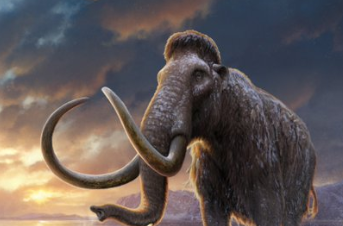Remember when they tried to claim humans hunted these beats to extinction?
Recent research has shifted the understanding of the extinction of the last woolly mammoths, suggesting a rapid, catastrophic event may have led to their demise around 4,000 years ago. Previously, scientists believed that the mammoths, isolated on Wrangel Island in the Arctic, went extinct due to inbreeding and genetic decline within the small population. However, new findings indicate that an abrupt incident, possibly a disease outbreak or a severe environmental change, might have been responsible.
The study, conducted by an international team of researchers and led by Love Dalén, a professor of evolutionary genomics at the Centre for Palaeogenetics in Stockholm, focused on the Wrangel Island mammoths. This island, located off the northeastern coast of Siberia, served as the last refuge for these ice age giants long after their counterparts on the mainland had disappeared.
The last woolly mammoths were impressively inbred—but that’s not what killed them | Popular Science https://t.co/eKGJqkYzuE
— Alfonso Gonzalez (@educatoral) June 29, 2024
Researchers extracted and analyzed DNA from 21 Siberian woolly mammoths, with samples spanning from 14 individuals who lived on Wrangel Island between 9,200 and 4,300 years ago and seven mainland ancestors. The DNA samples were meticulously collected from mammoth bones, teeth, and tusks, some of which were obtained during a 2017 expedition to Wrangel Island. The extraction involved using a dentist’s drill to obtain powder from the teeth, which was then purified to isolate the DNA.
Inbreeding didn’t kill woolly mammoths 4,000 years ago – something else did – Metro https://t.co/7GfDkybelh
— Deirdre Walsh (@magicdmw) June 29, 2024
The genetic analysis provided insights into the population dynamics and health of the Wrangel Island mammoths, revealing a level of genetic diversity that was unexpectedly robust, which called into question the previous theories of inbreeding and genetic deterioration as primary causes of extinction.
A freak event might have killed the last woolly mammoths – The Guardian https://t.co/mFaPriEdSo
— Suz (@SusanLynn0728) June 29, 2024
The revelation of a potential sudden catastrophic event as the cause of extinction adds a new dimension to the understanding of the survival and eventual disappearance of the woolly mammoths from our planet. Even more interesting is the possibility of the species being reborn via genetic manipulation. This project is being worked on in Russia, China and in the EU as well as the U.S. It may be only a matter of a few years before we actually have the Wooly Mammoth back on Earth.
Key Points:
i. New research challenges the long-held belief that inbreeding caused the extinction of the last woolly mammoths on Wrangel Island, suggesting instead a rapid catastrophic event.
ii. The study analyzed DNA from 21 woolly mammoths, comparing individuals from Wrangel Island and their mainland ancestors.
iii. Samples were collected using precise techniques, including drilling into mammoth teeth to extract DNA from the powder.
iv. Findings showed unexpected genetic diversity among the Wrangel Island mammoths, disputing the theory that genetic decline due to inbreeding was the cause of their extinction.
v. The research points to either a sudden disease outbreak or an extreme environmental change as the possible cause of the mammoths’ rapid disappearance approximately 4,000 years ago.
Lap Fu Ip – Reprinted with permission of Whatfinger News



